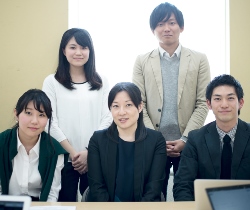Ethnography has already produced results in the West

Ethnography is a word meaning ethnic (ethno) and description (graphy). It has been used as a method of research whereby Western cultural anthropologists, when studying unknown (to them) ethnic groups in Oceania and Africa, would live among the locals, experience their lifestyle, and observe and record. It can be said that cultural anthropology developed together with ethnography. Ethnography has been widely applied thereafter in the fields of social sciences such as sociology. My specialization is sociology, and while I was studying in graduate school at Columbia University, there was a class on training with the techniques of ethnography. The students who received the training are making their names not only in academia, but also in the business world. In Japan, however, the reality was that there were few classes teaching practical techniques of ethnography. But the fact that ethnography is producing results in the marketing field in the West has become known in Japan, and as a result, Japanese companies have taken an interest in ethnography.
Method of going beyond the limits of conventional marketing
The reason why ethnography was applied to marketing in the first place was because with customer surveys and market research, which are the conventional marketing methods, it has become difficult to develop products that respond to the real needs that correspond to extremely fragmented consumer lifestyles or new lifestyle that emerged out of women’s advancement into society. For example, with surveys, which are one of the conventional research methods, even the act of creating the questions to the survey is limited within the scope of knowledge of the ones creating them. This is ineffective as a method to understand the new lifestyle that the researchers are not even aware of. When faced with such limitation, ethnography, which seeks habits and “real intentions” that the consumers themselves were not aware of by becoming part of people’s lives and observing and recording their lifestyles through experience, gained attention.
There is an example of a beer company, one of the largest in Europe, presented in the Harvard Business Review. This company, faced with declining sales in bars and pubs, performed extensive market research and competitor analysis, but with no result. Therefore, cultural anthropologists were brought in to identify the cause. It is what we now call academic-industrial collaboration. They, according to the method of ethnography, went to several dozen bars everyday as customers, without a single theory, for pure observation of the bars’ owners, staff, and regular customers. As a result, they found that the promotion goods that the beer company put a lot of effort into making were not being used (some bars treated them as garbage), the waitresses had no knowledge of the product, etc. Based on these results, the company did away with the promotion goods, customized according to individual store or owner type, held classes about its products for waitresses, and provided taxi service for those working late shifts to turn the waitresses into fans of the company. The result was recovering sales and even growing market share for the beer company.
Academic-industry collaborative research in Japan

In 2015, there was an offer for collaborative research applying ethnography to marketing from Dentsu. Marketing applying ethnography has been in use in some of the major Japanese companies but it remains a business secret, and the details are not disclosed. Thus, a collaborative research called ethno idea lab was started because there is a meaning in studying the application of ethnography through academic-industry collaboration with Dentsu and for the purpose of bestowing the skills of ethnography to students who would then use those skills to contribute to society.
For me, it was the first time applying ethnography to marketing, but the actual research yielded interesting results. For example, we investigated contact lenses: how they are used in everyday life, how they are put in, taken off, and when they are put in. Further, when purchasing contact lenses at a retail store, what is the interaction with the sales staff like, and how are people convinced when making a purchase? Upon studying 10 people for 3 months, we found that when making a purchase, what the contact lens maker regarded as the most important factor was in fact not important at all to users compared to other factors. The details of the study can be found on the collaborative research website (www.ethno-idea-lab.com), but through this study, I was convinced that ethnography can be applied to marketing.
Expectations for application in the field of medicine and welfare
In the future, I expect ethnography to be applied in the fields of medicine, nursing care, child rearing, etc., to develop treatment, medical devices, tools for nursing care, and services that are better for patients and users. In fact, there is a field called medical anthropology, which is the study of development of treatment without pain and inconvenience for patients. However, patients think it is normal for pain and inconvenience to accompany treatment, and they often do not express their true feelings to doctors and nurses, or they forget about their experience during hospitalization entirely when answering surveys at home after recovering. Ethnography, which would study hospitalization from the point of view of the patients, might be able to find solutions and real needs that the patients themselves were not able to come up with. In reality, stoma has been improved in the US through ethnography and its convenience has improved dramatically.
Ethnography captures events as personal experience. Fully understanding that fact will cultivate excellent skill in ethnography. My hope is that the students who are gaining rare opportunities of fieldwork through academic-industry collaboration will create a new form of social contribution using ethnography in the future.
* The information contained herein is current as of April 2016.
* The contents of articles on M’s Opinion are based on the personal ideas and opinions of the author and do not indicate the official opinion of Meiji University.
Information noted in the articles and videos, such as positions and affiliations, are current at the time of production.

